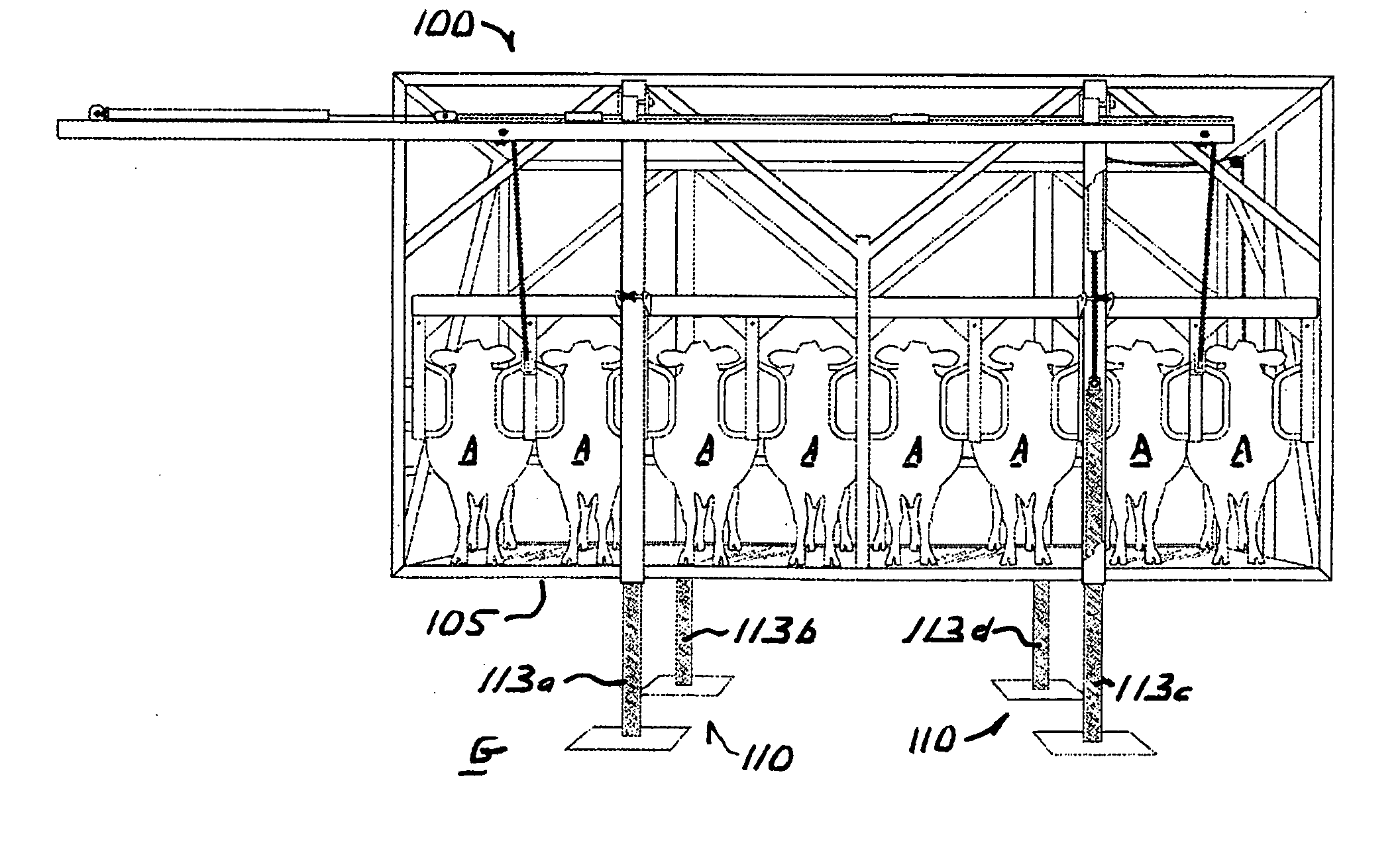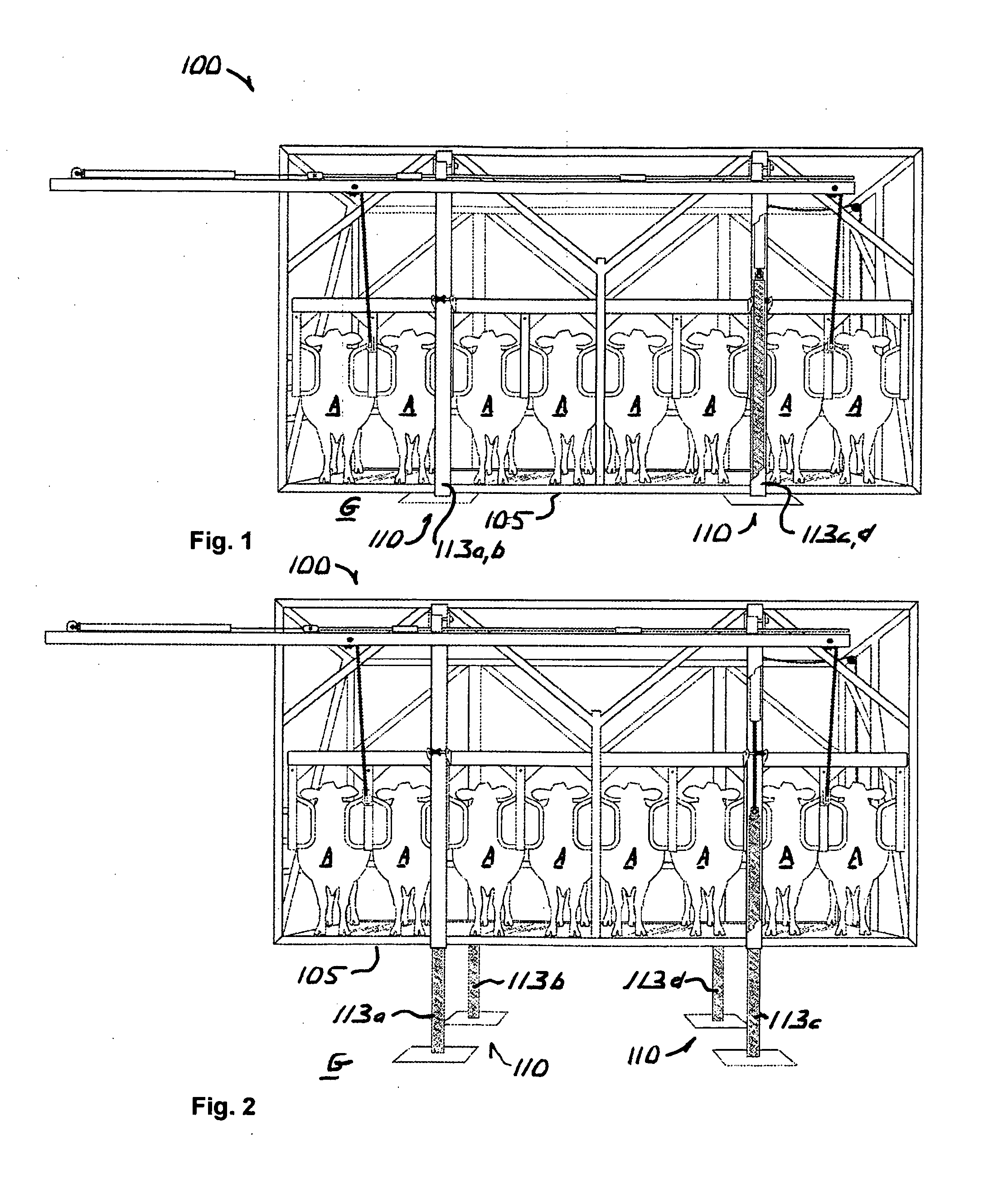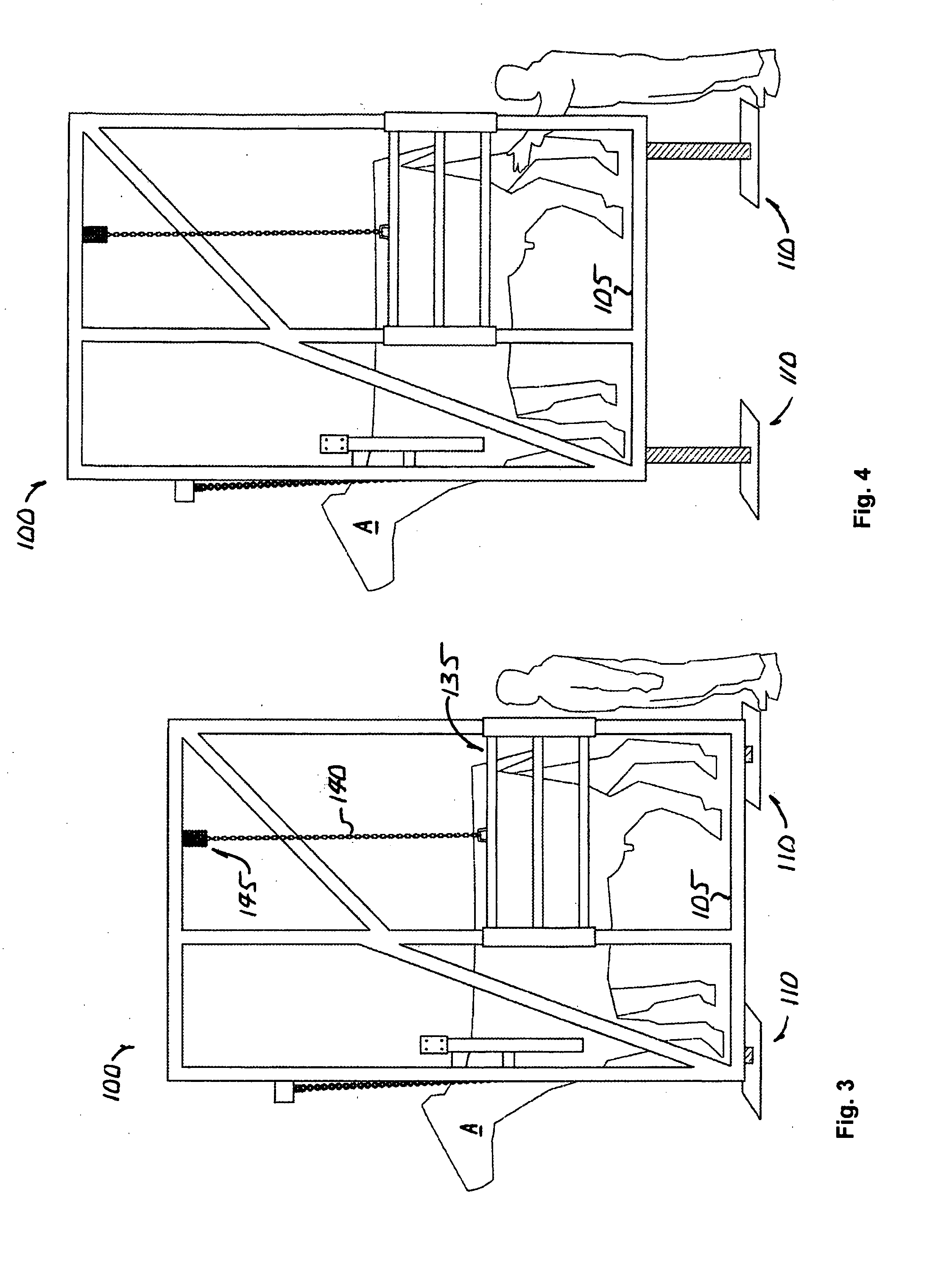Portable Milking Apparatus and Method
- Summary
- Abstract
- Description
- Claims
- Application Information
AI Technical Summary
Benefits of technology
Problems solved by technology
Method used
Image
Examples
Embodiment Construction
[0032]The invention is a portable milking apparatus that promotes ergonomically-facile milking without having the animal to be milked ascend or descend, and discourages the concentration of waste, thereby reducing the need for precious water resources and other consequences that remove nutrients.
[0033]Referring to FIGS. 1-4, an embodiment of the portable milking apparatus 100 configured according to principles of the invention includes a platform 105 configured to maintain multiple dairy animals A and an elevator 110 that positions platform 105 in at least a lowered position, wherein the platform is generally aligned with the ground G as shown in FIG. 1, and a raised position that enables milking at an ergonomically optimal height, as shown in FIG. 2.
[0034]Platform 105 is configured and constructed of any material appropriate for maintaining an animal, such as a cow.
[0035]Elevator 110, preferably, includes extensible legs 113a-d as shown. The invention may employ other means for ele...
PUM
 Login to View More
Login to View More Abstract
Description
Claims
Application Information
 Login to View More
Login to View More - R&D
- Intellectual Property
- Life Sciences
- Materials
- Tech Scout
- Unparalleled Data Quality
- Higher Quality Content
- 60% Fewer Hallucinations
Browse by: Latest US Patents, China's latest patents, Technical Efficacy Thesaurus, Application Domain, Technology Topic, Popular Technical Reports.
© 2025 PatSnap. All rights reserved.Legal|Privacy policy|Modern Slavery Act Transparency Statement|Sitemap|About US| Contact US: help@patsnap.com



